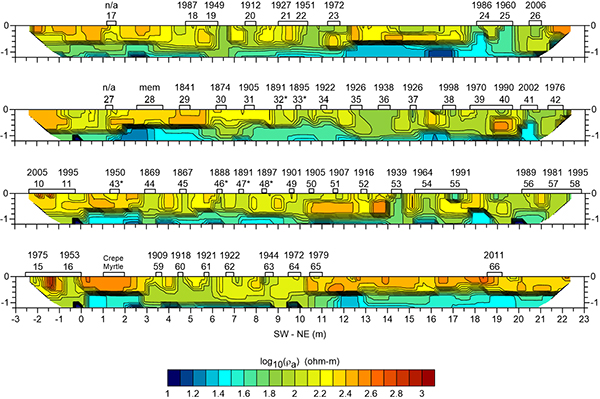
LGS Geophysics
The LGS Geophysics section applies geophysical field techniques to produce imagery and analysis of geological and anthropological features in the shallow subsurface. These techniques are rapid and economical means of locating and characterizing geological, archaeological, and environmental anomalies without excavation, and are a critical component of subsequent mitigation that may involve more intrusive measures.
Electrical resistivity and seismic refraction methods are established methods for imaging fault planes, sedimentary layering, and water table depths, but also effectively resolve objects of human origin buried in the subsurface.
Resistivity and magnetometry have been combined to locate human graves, decades and centuries old, in abandoned and active cemeteries, while geophysicists the world over are developing electrical techniques to find and analyze clandestine graves.
Magnetometry surveying has traditionally provided data for geological features - fault planes, impacts, and sedimentary structures – and has been an extremely valuable aid to archaeologists and engineers in the search for steel and fired ceramic objects in subsurface infrastructure, in abandoned waste repositories, and in historic and pre-historic ruins.
LGS continues the development of geophysical methods for shallow subsurface investigations. Measurement techniques and specialized equipment are continually tested and customized to improve efficiency in field surveying and data modeling, and to expand the scope of application, thus making geophysical surveying an economical and effective means of investigation over the range of scale from a single grave to an entire fluvial flood plain.
For inquiries and projects, contact:
Marty Horn, PhD
Assistant Professor - Research
Email: [email protected]
Telephone: 225-578-2681